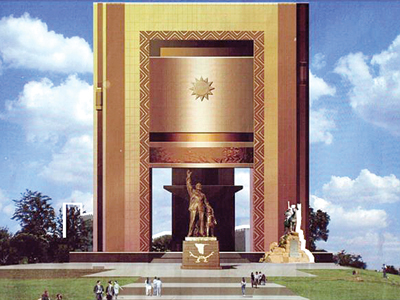At 23 years and 8 days old, Namibia is starting to face the very real possibility that its historical archives – the artifacts and memories documenting the country’s long fight to achieve nationhood and defeat apartheid – may be lost forever.
Most of Namibia’s original revolutionaries are now in their 70s, and when you search the internet for example, it’s often challenging to find any evidence that efforts have been made to preserve and share the stories, memories and oral histories of those who participated in that 40-year struggle. I’m hopeful that the National Archives have a good collection, but sometimes I hear stories that make me worry that much of what they have collected lacks the proper context. There’s a book here and there.
Namibia has an “independence museum” – an odd structure I hear people increasingly refer to as the “giant coffee maker”. Here’s an image of the Independence Museum:
But it doesn’t actually look like this. In reality, it’s surrounded by a chain-link fence, and there are no tourists loitering on its steps. It was conceived of in 2003 or so, and built between 2009 and 2011 by a North Korean construction company (apparently the North Koreans are good at building large, imposing edifices, as they also built Namibia’s State House), the thing now stands empty. Why? Rumor has it that those in possession of historic materials that would be worthy of showing in the museum are not willing to part with those items – at least not on terms agreeable to both parties. How do you decide fair compensation for something like that?
The latest sign to emerge that time is running out is a recent story in the Afrikaans-language Die Republikein. According to the article, twenty photographs from independence struggle photographer John Liebenberg were sold to European and American collectors for N$ 504,450 (US$ 54,000). The article points out that the photographer had attempted to sell them for a modest price to the national archives, for eventual display in the museum, but the expectation had been that he would donate the photos. “I can’t be expected to give away my life’s work for free,” he said. He noted the proceeds from the sale were desperately needed to pay for hip surgery.
At a certain point it’s necessary to ask who really owns these things. How was it possible for all of the Smithsonian institutions in the United States to amass the 137 million items in their possession? It started with a rich philanthropist named Smithson who left a small fortune to get things started. The U.S. government took it from there, and many of the museum’s holdings were donated.
Where is Namibia’s Smithson? I think he needs to be found soon.


